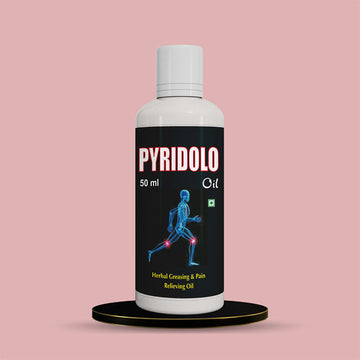Neck pain is an increasingly common issue, affecting people of all ages and lifestyles. With the rise of sedentary habits, particularly prolonged computer and smartphone use, more individuals experience neck discomfort and stiffness daily. Neck pain can range from a mild ache to debilitating discomfort, affecting one’s ability to concentrate, perform daily activities, and even get restful sleep. This condition, though often dismissed as temporary or mild, can become chronic and significantly impact quality of life if not addressed early.
Understanding neck pain is essential to prevent it from becoming a recurring problem. Recognizing the underlying causes, seeking an accurate diagnosis, and exploring effective treatment options are all critical steps in managing this condition. In this guide, we’ll take an in-depth look at what neck pain is, its possible causes, how it’s diagnosed, various treatment methods, and home remedies for alleviating pain and enhancing neck mobility.
Also Read: Chest Pain Due To Gas: Causes, Symptoms, Prevention, and Treatment
What Is Neck Pain?
Neck pain refers to discomfort, soreness, or stiffness in the neck area, typically spanning from the base of the skull to the top of the shoulders. This type of pain may vary in intensity and duration and can occur as a result of muscle strains, ligament injuries, or more serious conditions such as herniated discs or arthritis. Neck pain can be acute (short-term), lasting a few days to weeks, or chronic, persisting for months or even years.
The neck, or cervical spine, is a complex structure comprising seven vertebrae, muscles, nerves, and ligaments. It provides stability, mobility, and support to the head. Due to its range of motion and the delicate nature of the cervical spine, the neck is highly susceptible to strain, injury, and degenerative changes over time. Recognizing the signs and symptoms of neck pain and seeking early treatment can help prevent complications and improve overall well-being.
Possible Neck Pain Causes
1. Poor PosturePoor posture, particularly during prolonged screen time or while reading, places undue strain on the neck muscles and spine. When the head is positioned forward or down for extended periods, it increases the load on the cervical spine, leading to muscle fatigue and pain.
2. Muscle Strain and Sprain
Engaging in sudden or repetitive neck movements can cause muscles and ligaments to overstretch or tear. Activities like heavy lifting, twisting, or sleeping in an awkward position can strain neck muscles, resulting in pain and limited mobility.
3. Cervical Disc Degeneration
Over time, the intervertebral discs in the cervical spine may degenerate or wear down, reducing their ability to absorb shock. This condition, known as cervical spondylosis, can lead to pain, stiffness, and restricted neck movement.
4. Nerve Compression
Conditions like herniated discs or bone spurs can press on nerves in the cervical spine, leading to pain that may radiate to the shoulders, arms, or hands. This nerve compression can cause weakness, numbness, or tingling in affected areas.
5. Injury or Trauma
Accidents or sudden impacts, such as whiplash from a car accident, can lead to cervical spine injuries. These injuries may damage muscles, ligaments, or the vertebrae, resulting in significant pain and restricted movement.
6. Arthritis
Cervical arthritis, or osteoarthritis, is a condition where the cartilage between the neck joints breaks down, leading to joint stiffness and pain. This condition is more common as people age and may worsen over time without proper management.
7. Infections and Other Health Conditions
Certain infections, like meningitis, or conditions such as fibromyalgia can also contribute to neck pain. These health issues may cause inflammation in the neck area or lead to widespread musculoskeletal pain.
Also Read: Understanding Joint Pain: Causes, Treatments, and Ayurvedic Solutions
How Is Neck Pain Diagnosed?
- Medical History Review: The doctor will inquire about symptoms, medical history, and possible injury causes.
- Physical Examination: The neck’s range of motion, muscle strength, and sensitivity are evaluated to pinpoint areas of discomfort.
- Imaging Tests: X-rays, MRIs, or CT scans may be ordered to visualize any structural issues within the cervical spine, such as herniated discs, fractures, or arthritis.
- Nerve Function Tests: Tests like electromyography (EMG) may assess nerve and muscle function to determine if nerve compression is present.
- Blood Tests: Blood tests may be recommended to check for infections or inflammatory conditions like arthritis, especially if pain is persistent.
How Is Neck Pain Managed or Treated?
1. MedicationAnti-inflammatory drugs, muscle relaxants, or pain relievers can reduce neck pain and inflammation. However, they are generally used short-term and must be taken as prescribed by a healthcare provider.
2. Physical Therapy
Physical therapy focuses on strengthening neck muscles, improving posture, and enhancing flexibility. A physical therapist can guide specific exercises to relieve pain and prevent future injuries.
3. Heat and Cold Therapy
Applying heat helps relax muscles and improve blood flow, while cold packs can reduce inflammation and numb the area, offering temporary relief. Alternating between hot and cold therapy is often effective for managing pain.
4. Massage Therapy
Gentle massage by a licensed therapist can help release muscle tension and improve circulation. Regular massage sessions can be beneficial for those with chronic neck pain.
5. Chiropractic Adjustments
A chiropractor can perform spinal manipulations to improve alignment and reduce neck pain. This treatment should be done by a certified professional and may not be suitable for all individuals.
6. Surgery
Surgery is a last resort for severe cases, such as nerve compression or structural issues, that do not respond to conservative treatments. Procedures like disc replacement or spinal fusion are performed to alleviate pain and improve neck stability.
Also Read: Unveiling the Causes of Muscle Pain: Understanding, Symptoms, and Solutions
Neck Pain Relief at Home
1. Maintain Good PosturePractice good posture by keeping the head aligned with the spine. Avoid slouching and keep devices at eye level to prevent strain on the neck muscles.
2. Stretching Exercises
Gentle neck stretches can help relieve stiffness and improve flexibility. Exercises like tilting the head side to side, rotating it slowly, and moving it forward and backward can ease muscle tension.
3. Mindful Screen Usage
Limit screen time and take regular breaks to avoid neck strain. During breaks, stretch your neck and shoulders to reduce stiffness and tension.
4. Sleep on a Supportive Pillow
Use a pillow that supports the natural curve of the neck. Avoid overly high or flat pillows, as they can contribute to poor neck alignment and discomfort.
5. Stay Hydrated
Drinking water helps maintain the hydration and elasticity of spinal discs. Ensure adequate daily water intake to support your spine and reduce the risk of disc degeneration.
6. Apply Warm Compresses
Using a warm compress or heating pad for 10-15 minutes can soothe sore muscles and promote relaxation. Repeat this remedy as needed to manage discomfort.
Conclusion
Neck pain is a prevalent issue that can disrupt daily life, affecting physical comfort and overall well-being. Its causes range from poor posture and muscle strain to serious conditions such as arthritis and nerve compression. Early diagnosis is crucial for understanding the root cause and preventing chronic discomfort. A variety of treatment options are available, including physical therapy, medication, and, in severe cases, surgical intervention. Additionally, home remedies like maintaining good posture, performing neck stretches, and using supportive pillows can provide relief and prevent recurrence. By being proactive and following a tailored management plan, individuals can effectively manage neck pain, promote neck health, and restore their quality of life.












